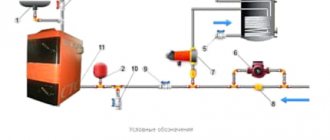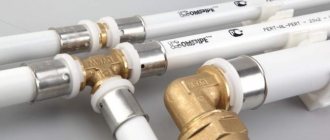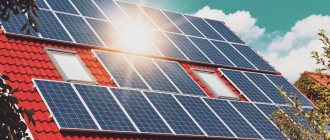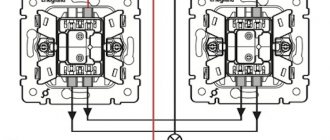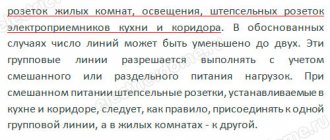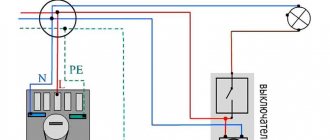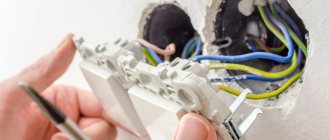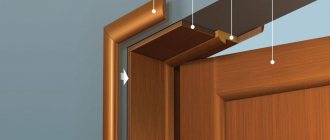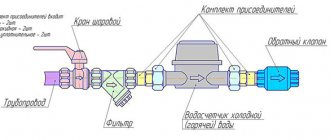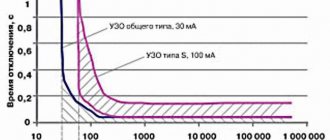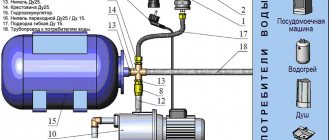The deterioration of water supply lines affected the quality of water supplied to apartments and private houses. Its use for cooking and drinking is impossible without the use of filters. The best degree of purification is ensured by installing reverse osmosis - the most advanced filtration system to date. To install it yourself, you will not need any special skills or special tools.
How a reverse osmosis filter works and how it works
Initially, installations of this type were used for desalination of sea water. But as soon as technology made it possible to produce such devices in a smaller and more expensive design, they firmly occupied their niche in the household filter market.
The principle of operation of the device is based on the phenomenon of reverse osmosis - pressing water through a membrane with microscopic holes, the size of which matches the size of H2O molecules. All larger particles are retained, so the output is practically demineralized water. Impurities that do not pass through the membrane filter are discharged into the sewer system in the form of a concentrated salt composition.
Distilled water is harmless to the body, but it is also devoid of beneficial salts that are vital for it. Therefore, after final purification, it is recommended to subject the water to additional mineralization, increasing its usefulness and improving its taste.
INTERESTING FACTS!
- The purest water, free of impurities, does not freeze at 0 °C, but goes into a state called supercooling. It does not turn into ice until -38 °C and remains liquid. Scientists have found that for ice crystals to appear, a point of formation is needed, a foreign body in the water - an air bubble, a speck. If you shake a bottle of super-chilled water, bubbles will form and it will instantly freeze.
- Water is an excellent conductor of electricity. But not distilled, because electricity is carried by molecules of impurities and ions of substances dissolved in it.
- Everyone is familiar with the three physical states of water – liquid, solid and gaseous. Scientists distinguish five phases of liquid water and as many as 14 phases of ice.
- At -120 °C, frozen pure water becomes viscous and viscous, and at -135 °C it will become glassy - solid, but without a crystalline structure.
For long-term operation of the membrane, water is first passed through filters that remove mechanical suspensions and other impurities from it. Thus, the water purification system using reverse osmosis consists of 4–5 stages, to which additional elements can be connected if desired.
Principle of operation
It must divide the total flow into two parts: in one, passed further to the end-use points, there will be no pollution at all, in the other, discharged, almost all undesirable impurities will remain. A finely porous membrane with holes 0.0001 microns in size is responsible for this - only those particles that are equal to or smaller than H2O molecules pass through such cells, but others will settle on the walls and bottom of the tank, after which they will be collected and sent to the sewer.
To prevent chlorine residues, rust flakes and other relatively large fractions from clogging such a thin barrier, water is passed through pre-filters. They are more “coarse” - with a mesh of 5 and 1 microns - and a cartridge with carbon filler is placed between them. This combination allows you to effectively retain solutions of chemical reagents, heavy metal salts and other harmful components.
The two separated parts of the stream are permeate and concentrate. Up to 60-65% of the second one consists of impurities (hence the name), and it must be disposed of, that is, drained. But the degree of purification of the first reaches 98%, however, along with undesirable substances, useful ones that have a positive effect on organoleptics are also removed.
To correct this problem, the liquid suitable for further use is passed through a mineralizer - a special bioceramic filter with tourmaline loading. It has restorative properties, that is, it releases the substances it contains, which make the composition of H2O again close to natural. Even the simplest filler made from coconut shells and activated carbon already removes the unpleasant aftertaste, not to mention more advanced options.
Water purification stages
Water preparation is carried out in a pre-treatment unit. These are three different types of filters:
- Coarse cleaning – retains particles of sand, rust and other mechanical suspensions.
- Carbon - removes chlorine compounds, phenol and other dissolved substances.
- Fine cleaning – captures particles up to one micron in size.
The prepared water seeps through the membrane into the storage tank. The concentrated brine, containing all the impurities, goes through the pipes into the sewer system.
Before use, another final stage of cleaning is provided: a carbon post-filter or mineralizer.
Final table
The table below accumulates basic information about all the systems described in this article and shows approximate prices in Moscow and St. Petersburg.
| Model name | Main advantage | Peculiarities | Resource | Price, rub |
| Aquaphor DWM 101 Morion | 5 year warranty | Upper membrane drainage | 7,000 l | 7300–9000 |
| Atoll A-550 Patriot | Full set of materials and tools for installation | Suitable only for post-purification of tap water | 6,500 l | 6900–8600 |
| New Water Expert Osmos MO530 | Low pressure operation | The container is equipped with a replaceable antibacterial bag | 10,000 l | 11000 –15000 |
| Geyser Prestige | Large tank capacity | When filtering up to 200 liters of dirty water per day, the second-stage cartridge can be replaced with an Aragon ion-exchange filter element. | 3,500 l | 8800–10000 |
| BARRIER PROFI OSMO 100 | High rate of accumulation of purified water | The service life of the membrane depends on the performance of the preliminary water treatment unit | 5,000 l | 6000–8000 |
| Atoll A-550m STD | Large tank capacity | Purifies water without chemicals | 6,500 l | 11900–12800 |
| Aquaphor OSMO 50 | Possibility of using water for baby food | The service life of the membrane depends on the performance of the preliminary water treatment unit | 7,000 l | 5900–7800 |
Attention . The models Aquaphor Osmo 50, Barrier Profi Osmo 100, Atoll A-550 Patriot do not have a mineralizer.
Subtleties of choosing an osmotic filter and additional elements
Before going to the store, several measurements are taken. They will help you make the right choice.
- The pressure in the pipes is measured. To force liquid through the membrane and normal operation of the reverse osmosis system, at least 2.8 bar is required. If it is less, you cannot do without a booster pump - a pressure booster pump with a transformer.
USEFUL INFORMATION: How to move a heated towel rail to another wall: water and electric (video)
- The approximate water consumption in the family is calculated. Based on this indicator, the required performance of the cleaning system is determined. First of all, it depends on the membrane used. For domestic use, a 50G (8 l/hour) or 75G (12 l/hour) membrane is sufficient. Gallon (G) per day is a unit of measurement for membrane performance adopted by global manufacturers. 1 G=3.785 liters.
- Based on the throughput of the membrane, a water flow limiter is purchased. This is a calibrated tube through which the liquid is discharged into the sewer. For a 50G membrane, a flow limiter with a value of 300 is suitable, for 75G - 450, for 100G - 550. With low pressure in the water supply, you can use a limiter with a lower value.
- It is also recommended to measure the space under the sink to be sure that the selected model will fit there.
- To properly seal the connections, purchase FUM tape.
Installation of additional accessories
They increase the overall efficiency of the system. Both the ice maker (cooling) and the anti-spill devices have their benefits, but we want to focus on what is used almost always.
Pressure stabilization pump
It provides pumping if the indicator drops below 2.8 atm. The standard diagram for connecting reverse osmosis with a pump looks like this:
The installation is carried out together with an adjustment sensor that turns the blower on/off as needed. It is placed in a pipe in front of the tank, complete with a reduction valve, if there is a possibility of surges up to 3-4 atm.
ultraviolet lamp
Needed for disinfection - in cases where a favorable environment for the growth of bacteria has been formed. Helps protect cartridges from fouling by microorganisms and maintain their performance. It illuminates the passing liquid with ultraviolet light and thus disinfects it. Can be placed:
- at the entrance - if the environment coming from the main line is rich in pests;
- between the tank and the tap - to protect the liquid already in the tank.
It is secured using clips - directly on the body.
Mineralizer
Restores the supply of useful substances lost from the liquid as a result of passing through the traps, and also adjusts the pH level, saturating the flow with particles of zinc, magnesium, calcium and other necessary microelements. It is located after the tank, being a kind of last stage of equipment.
DIY installation and connection of reverse osmosis
The preparatory work is simple:
- We block the access of water to the apartment.
- Relieve the pressure in the pipes by opening one of the taps for 1 minute.
The installation procedure is specified in the instructions included in the delivery kit. In most cases, the device is placed under the sink: this arrangement provides easy access for preventative maintenance and hides it from sunlight.
The connection diagram can be seen in the following image.
Danger of liquid from the water supply
Pure water is an important component for the functioning of all components of the body. Unfortunately, most people do not have access to this natural resource. This is especially true for residents of industrial cities and settlements where hazardous industries are located. The ground deposits from which wells and boreholes are drawn are poisoned by emissions, and centralized water pipelines are not equipped with equipment capable of carrying out high-quality cleaning.
Naturally, the level of pollution does not cause immediate poisoning, however, chlorine, fluorine and other compounds used in centralized water supply systems are toxic and can accumulate in the body and ultimately lead to the development of chronic diseases.
The only way to protect yourself and your loved ones is to take care of purchasing filtering equipment.
Drinking tap installation
A separate tap for clean drinking water is installed on the sink or on the countertop nearby.
- Drill a hole at the mounting location. We choose it so as to avoid kinks or twisting of the eyeliner.
Some craftsmen cover the surface of the countertop around the future hole with adhesive tape: this helps avoid chipping. They drill in two steps: first with a 6 mm drill, and then widened to 12. The torn edges are trimmed with a needle file.
- Having equipped the faucet with a decorative cover and a rubber washer, insert it into the hole. From below we put on a smaller rubber washer, a plastic ring and the rest of the elements indicated in the diagram, and tighten the threaded connections.
You should carefully remove chips and other contaminants from under the rubber gasket that ensures tightness.
In the future, all that remains is to connect the drinking faucet to the outlet tube from the reverse osmosis filter.
Advantages of cooperation with our company
The above impressive list of advantages of water treatment systems used today can be fully realized only with the proper selection of a suitable reverse osmosis installation. Contacting us provides potential buyers with several advantages:
- Professional advice and assistance in choosing equipment;
- A variety of models of reverse osmosis installations presented in the enterprise catalogue;
- Favorable prices from the manufacturer, which are achieved by the absence of intermediaries and constant work on cost optimization.
- Warranty and post-warranty service.
To receive a personal commercial offer and place an order, just contact a company employee in any accessible and convenient way - by phone 8-499-391-39-59, e-mail or using the feedback form posted on the website.
Connection to water supply
The connection to the water supply is made through a coupling (adapter, tee), into which the water supply tap from the kit is inserted. Typically, a tee is mounted at the junction of the water supply with a flexible line going to the mixer.
Procedure:
- Disconnect the cold water mixer supply from the water supply.
- We connect the liner to the adapter, checking the presence of the rubber gasket.
- Screw the water supply valve into the adapter coupling.
- Unscrew the nut from the water supply fitting and put it on the plastic tube from the filter kit (see photo).
- We pull the tube itself onto the fitting and tighten the nut by hand without using a wrench, with a little force.
- The water supply tap can be equipped with a quick-release collet connection; in this case, you just need to insert the tube until it stops.
- Close the water supply tap and check the joints for leaks.
The tightness of the connections is ensured by the use of FUM tape.
If necessary, a booster pump is placed between the pre-filters and the osmotic membrane. This will extend the life of the pump: it will not wear out due to sand and rust. The pump control relay should be located between the membrane and the storage tank.
Three-way valves are used to install measuring instruments, such as a pressure gauge.
A four-way bypass valve is located in this same area. It will shut off the water when the storage tank is filled.
USEFUL INFORMATION: How to replace individual hot water meters?
Installation is simplified if all devices are placed in a single housing by the manufacturer. These models are the easiest to install yourself.
Tips for use
If, after starting the system, the drinking water has a milky tint and contains small air bubbles, do not worry. This is the influence of air dissolved in water, it is not dangerous. This effect will disappear after a few days or weeks.
If the pre-filters become dirty too quickly, as well as the presence of mucus on the cartridges, this may be a symptom of low pressure in the water supply network. The problem is usually solved with a pump.
Sometimes washing the carbon filter can cause the third filter to become dirty immediately after installation. To prevent this from happening, it is better to install the third filter after the carbon cartridge has been washed. But you should not try to rinse the carbon filter under running water, as this can ruin it.
Do not neglect washing the carbon cartridge, as this can lead to rapid clogging of the membrane. The same effect can be produced by too high pressure in the water supply system, too infrequent replacement of pre-filters or the use of low-quality cartridges, or clogging of the sewer system.
If scale forms in the kettle when boiling water, you should check the connection order. There may be a hose connected to the drinking tap through which the concentrates are supplied, and the purified water goes down the drain.
If the purified water has acquired an unusual smell and taste, it is necessary to check the pre-filters as soon as possible. Perhaps their resource has been exhausted and needs replacement. This phenomenon may also indicate the presence of bacterial contamination.
The membrane cartridge of the reverse osmosis system is housed in a plastic housing. It must be replaced every 3-5 years depending on the salt content in the purified water
Pre-clean cartridges should be replaced every six months or more frequently. A new membrane usually needs to be installed every three to five years. The condition of the purified water should be checked annually. If the salt content exceeds 20 mg/l, the membrane must be replaced.
Connection to sewerage
To drain dirty water into the sewer, a hole with a diameter of 7–8 mm is made in the drainage pipe of the sink. Then the order will be like this:
- We glue a gasket onto the part of the clamp with the hole.
- We fix the clamp so that its fitting coincides with the drilled hole in the drain pipe.
- Use a wrench to tighten the nuts on the clamp.
- We insert an outlet tube lubricated with silicone, which is usually black, into the clamp fitting. All these parts are included in the delivery kit. The tube should be directed downward and not rest against the wall of the siphon. This way, the water discharged into the sewer will make less noise.
Important! Do not place the drain hole at the lower bend point of the siphon. It is advisable to do it above the water seal. The area on which the clamp will be attached must be flat, without bending: this is the only way to achieve a tight joint.
Structurer
What is a reverse osmosis filter structurer? This is the part that is responsible for water purification, specifically tourmaline ionizers and bioceramic cartridges. Outwardly, it looks like a cylinder, the body of which is made of plastic. Inside there is a glass tube containing a filter agent. Activated carbon, tourmaline, clay, etc. are used as fillers. Tourmaline is a type of quartz sand that has high absorbent properties. If it is heated, electrostatic discharges appear on the surface, creating an electromagnetic field. This helps to further disinfect water due to the ionization effect
As a result, the water becomes healthy, very soft and pleasant to the taste, so if you decide to use reverse osmosis, pay attention to these cartridges
The more degrees of purification there are in the system, the more expensive it is.
Installation of filter elements and storage tank
The filtration system modules need to be compactly and conveniently arranged under the sink. We select the wall on which the filter unit will hang and screw the screws into it. Then we proceed according to this scheme:
- We install the cartridges into the filter flasks, strictly following the order prescribed in the instructions.
- We insert the membrane into the housing.
- Lubricate the tubes for connecting the filter parts with silicone and connect them in the correct order.
Tube connection diagram:
- The water supply pipe is the inlet of the first filter.
- The storage tank is the inlet of the 5th stage filter.
- The output of the 5th stage is a drinking tap.
- The outlet of the membrane filter (4th stage) is a drainage hole (clamp).
How the tubes are connected:
- We cut the tube to size at a right angle (there should be a small margin, the tube will be recessed 1–1.5 cm on each side).
- We press our fingers on the collet - a plastic ring that protrudes from the flask - and carefully remove the plug. If it does not come out, you need to press a little harder so that the pressure is even.
- Press the collet again and insert the tube so that it goes in all the way.
- We put the locking clip-half ring on the collet.
- We check the quality of the connection by pulling the handset towards you.
To connect the storage tank, screw the tap from the kit onto the thread of the branch pipe, sealed with FUM tape, and insert the required tube into it.
Many manufacturers do not include a mineralizer as an additional stage. As a rule, the mineralizer combines the functions of a carbon post-filter and a mineralizing one.
Structural elements
Let's look at the performance and role of each:
- Polypropylene cartridge – consists of 100% polymer, helps remove mechanical impurities. It lasts a long time, as it resists bacteria and chemicals, and its fibers on the inside are even stronger than on the outside.
- Carbon filter – with granular loading, responsible for eliminating organic matter and chloride compounds. It is a mandatory functional part of any equipment.
- STO-catcher - helps to trap even particles of contaminants 5 microns in size and larger (including harmful bacteria). It is a pressed block with a retaining shell made of polypropylene, which helps remove the coarsest fractions. It is made quite rigid - due to the built-in core.
- The membrane is a semi-permeable structure with the most dense mesh, allowing only O2 and H2O molecules to pass through. Since it is very sensitive and easily clogged, all the previously described elements are located in front of it to prevent it from clogging. All impurities that it stops must be washed off.
- Post-catchers have a service life of up to 5-6,000 liters, so they are replaced relatively often. They are placed after the main cleaning element, hence the name. They are used until the liquid is finally ready for consumption for food purposes.
1.5 m3/h For process water
1.5 m3/h For process water
MBFT-75 Membrane for 75GPD
Assembly and installation of systems of popular brands: video
The principle of installing reverse osmosis systems is the same, but the products of different companies have their differences. Filters from the following manufacturers are widely known on the Russian market:
- "Atoll" is the very first reverse osmosis system in Russia. Has extensive experience in developing, supporting and improving reverse osmosis technology in Russia for 25 years. A wide range of models will not leave even the most demanding buyer without choice. It is supplied both as a set of filter cartridges and as a compact ready-made unit. This module is easy to connect yourself. There are budget and advanced modifications.
Let's look at the installation process using the example of the Atoll A-575 Box STD reverse osmosis system (Sailboat)
USEFUL INFORMATION: Selecting fine water filters: types of cartridges, cleaning methods
- "Geyser" - osmotic purification systems of the "Prestige" series. They come with a storage tank that allows you to collect water for drinking at any time. Models with the letter “P” in their names are equipped with a pump that increases the pressure in the system and are more expensive. The letter “M” indicates the presence of a mineralization module.
- "Aquaphor". One of the leaders in the production of filter systems. Each model comes with a 5-liter expansion tank. Osmotic membranes from Aquaphor work well even at low pressure in the water supply without installing an additional pump: just 1.5 atmospheres is enough. Another distinctive feature is the economical use of liquid: no more than 20% of the total volume of water is consumed to remove impurities from the membrane.
- "Barrier". The best model according to reviews is Osmo 100. Has 5 stages of cleaning, 8-liter storage tank. It is cheaper than analogs from other companies, but is not inferior to them in quality. The disadvantage is the lack of a mineralizer.
- "Aquapro". Well-proven filter systems with a good price/quality ratio. A popular model is AQUAPRO AP 600 with a large 12 liter storage tank and 5-stage filtration.
Service
To ensure that the water supplied by reverse osmosis is always clean, you need to change the filters and membrane in a timely manner. Using the water meter, you can determine how much water has been purified by the system. Most often, filters will need to be changed every 3-6 months (depending on water consumption).
The membrane, depending on the characteristics specified by the manufacturer, is changed every 1-5 years. This procedure is performed if sediment appears in the membrane block, the water quality has deteriorated, and the pressure has decreased. If the system has not been used for several weeks, the membrane will need to be disinfected.
To replace system elements, you will need to turn off the water and open the tap. After releasing the pressure, unscrew the flasks (the key is supplied). Old cartridges are taken out. The flasks need to be washed. Next, the same new cartridges are installed.
Start-up and flushing
Before starting operation, it is necessary to flush and check the system. This is done like this:
- Wash the filter elements by running water with the valve of the storage tank closed. About 10 liters of water are drained. Simultaneously with flushing, air is forced out of the system.
- Stop the flow of liquid into the filter. Check for leaks. If necessary, correct errors during connection.
- Fill the system with the valve of the storage tank open. This will take several hours. Afterwards all the liquid is drained.
- For drinking and cooking, use water only after refilling the container.
Advantages
- The quality of the water obtained at the output - it can be used as drinking water, used for cooking, given to children and animals. It is much healthier than boiled one.
- Despite the complexity of the system, it is quite compact, and the only visible parts are a convenient faucet on the sink.
- Manufacturers form a kit of all components, including tools and fasteners, ensuring ease of installation.
- All station parts are replaceable. Despite the initial high cost of the set, further expenses will be solely on replacing filters.
- Many installations are equipped with monitoring sensors and signal the need to replace components.

